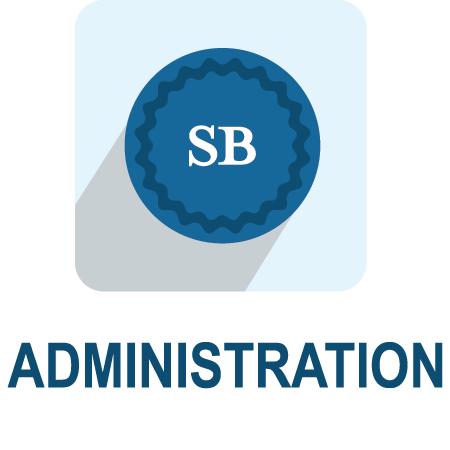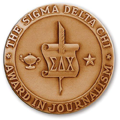Court to Hear Student Loan Bankruptcy Case
Below, Stanford Law School’s Bryan Henderson previews United Student Aid Funds, Inc. v. Espinosa, one of two cases to be heard by the Supreme Court on Tuesday, December 1. Check the United Student Aid Funds (08-1134) SCOTUSwiki page for additional updates.
On Tuesday, December 1, in United Student Aid Funds, Inc. v. Espinosa (No. 08-1134), the Court will construe the Bankruptcy Code for the third time this Term. The question before the Court in Espinosa is whether a bankruptcy court's orders confirming a debtor's plan and, subsequently, discharging the debtor's student loan debt are valid when the debtor has not demonstrated undue hardship. The court may also consider whether the due process standard established in Mullane v. Central Hanover Bank & Trust (1950) is met when a debtor fails to meet the heightened notice procedures mandated by the Federal Rules of Bankruptcy Procedure.
During 1988 and 1989, respondent Francisco J. Espinosa obtained four federally guaranteed student loans totaling over thirteen thousand dollars. In 1992, Espinosa filed for Chapter 13 Bankruptcy, identifying the student loans as his only debt. In his bankruptcy plan, which he mailed to petitioner United Student Aid Funds ("USAF"), the holder of his loans, Espinosa proposed to repay only the principal owed on the loans.
USAF filed a proof of claim in the bankruptcy court for $17,832.15, representing both the principal and the accrued interest on the loans. The bankruptcy court, however, entered a confirmation order approving Espinosa's plan as submitted "“ that is, requiring him to repay only $13,250. The court did not make an undue hardship finding as required by the Code, nor did Espinosa initiate an adversary proceeding as required by the Rules. Instead, the bankruptcy trustee sent USAF a form notice indicating that the repayment amount approved by the court differed from the amount that USAF had claimed.
After Espinosa completed the payments required by the plan, the bankruptcy court entered a discharge order that enjoined Espinosa's creditors from attempting to collect on his debts "“ again, without any finding of an undue hardship with regard to his student loans. Three years later, USAF indirectly sought to collect the additional money owed to it by Espinosa by garnishing Espinosa's federal income tax refunds.
Espinosa subsequently reopened his bankruptcy case, seeking an order that would prohibit creditors from collecting his discharged debts. USAF then sought relief from the original confirmation order, arguing that it had been entered in violation of the Code and Rules and was thus void. The bankruptcy court ruled in Espinosa's favor, but the district court reversed. It held that the confirmation order was void and remanded the case for an adversary hearing to determine whether Espinosa faced undue hardship.
After an initial remand, the Ninth Circuit reversed and remanded. In its view, USAF's argument that the violation of the Bankruptcy Code and Rules rendered the confirmation and discharge orders void was foreclosed by its 1999 decision holding that a discharge is a final judgment which can only be challenged on direct appeal. It also rejected USAF's alternative argument that Mullane's requirement of "notice reasonably calculated under the circumstances" was not satisfied absent service of a complaint and summons.
After its petition for rehearing en banc was denied, USAF filed a petition for certiorari in which it argued that review was warranted because the Ninth Circuit's decision allowing "discharge by declaration" both conflicted with the decisions of other circuits and directly contradicted the Court's acknowledgement in dicta in Tennessee Student Assistance Corp. v. Hood that the Code's undue hardship provision is "self-executing" "“ that is, unless a debtor secures a hardship determination, a discharge order cannot include student loan debt. The Court granted cert. on June 15, 2009.
In its brief on the merits, USAF relies on the text of the Code and the Court's acknowledgement in Hood that student debt is non-dischargeable absent an undue hardship determination, which must in turn be obtained through an adversary proceeding. Because the court's confirmation of the plan including student debt exceeded the authority granted to it by law, its judgment was thus void and could be attacked under the Federal Rules of Civil Procedure. USAF argues that neither the confirmation nor the discharge order is res judicata because the Code's finality provision"”§ 1327(a)"”does not apply to provisions that are contrary to law. The statutory construction principle that the specific governs the general supports this proposition, as construing the finality provision to trump the limitations on discharge would render those limitations partially ineffective.
USAF also argues that the undesirable effects of the Ninth Circuit's rule would not be limited to the student loan context; rather, the rule would "“ in conflict with Congress's express judgment that some debts are nondischargable "“ allow other debts, such as debts from unpaid taxes and customs, certain torts judgments, and fines included in criminal sentences, to be discharged "by declaration." Finally, USAF argues that due process demands compliance with heightened procedural requirements "“ such as the requirement that an undue hardship declaration be obtained only through an adversary proceeding "“ and that Espinosa's failure to follow the Rules renders the confirmation order void.
Espinosa (as well as his amici, Chapter 13 Trustees) counters by emphasizing the important reliance interest of trustees and creditors in the finality of confirmed plans and arguing that the Code's finality provision precludes USAF's attack on the confirmation order. Espinosa relies on Traveler's Indemnity Co. v. Bailey, in which the Court recently held that plaintiffs could not bring suit twenty years after the bankruptcy court issued an injunction even if the bankruptcy court exceeded its jurisdictional power in so doing. Espinosa also dismisses the textual argument, made by the U.S. in its amicus brief, that student debt simply cannot be discharged without an undue hardship determination as not properly before the Court. Finally, Espinosa argues that USAF's due process argument fails because heightened procedural requirements can be waived, and the actual notice which USAF undisputedly received meets the constitutional minimum.
In its reply brief, USAF adopts the argument, made by the United States in its amicus brief, that Congress created a tripartite ordering of debts under the Code: debts that are fully dischargeable, debts that are dischargeable unless the creditor objects, and debts that are excluded from discharge. Absent a hardship determination, student loan debt falls into the third category. Funds notes that Traveler's and the other cases on which Espinosa and his amici rely prohibit collateral attacks on a judgment, not direct attacks on a judgment "“ attacks not barred by res judicata. Finally, USAF reiterates that requiring creditors to object to the inclusion of nondischargeable debts in a Chapter 13 plan would result in "thousands upon thousands" of pro forma objections, leading to additional expenses for both creditors and debtors.

















